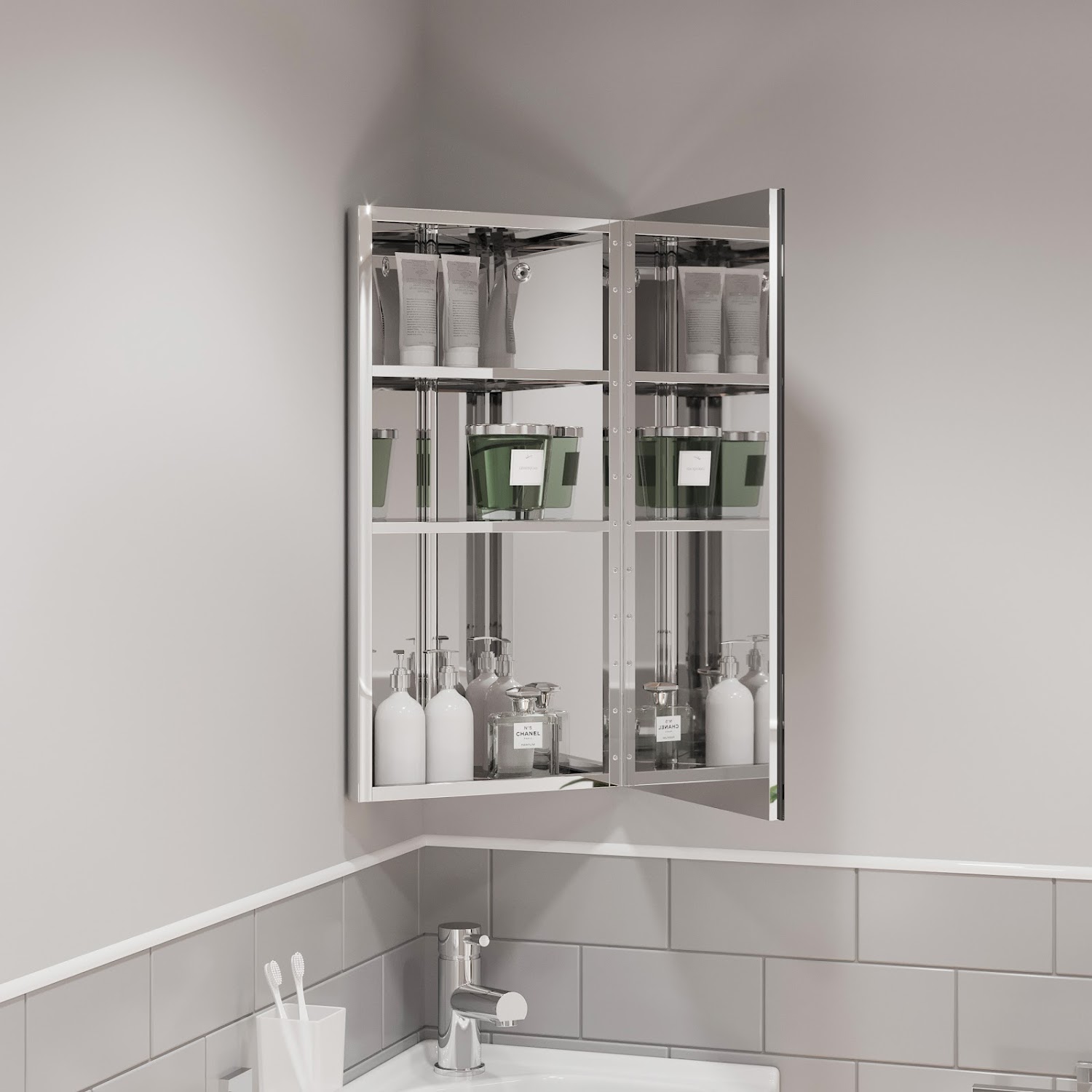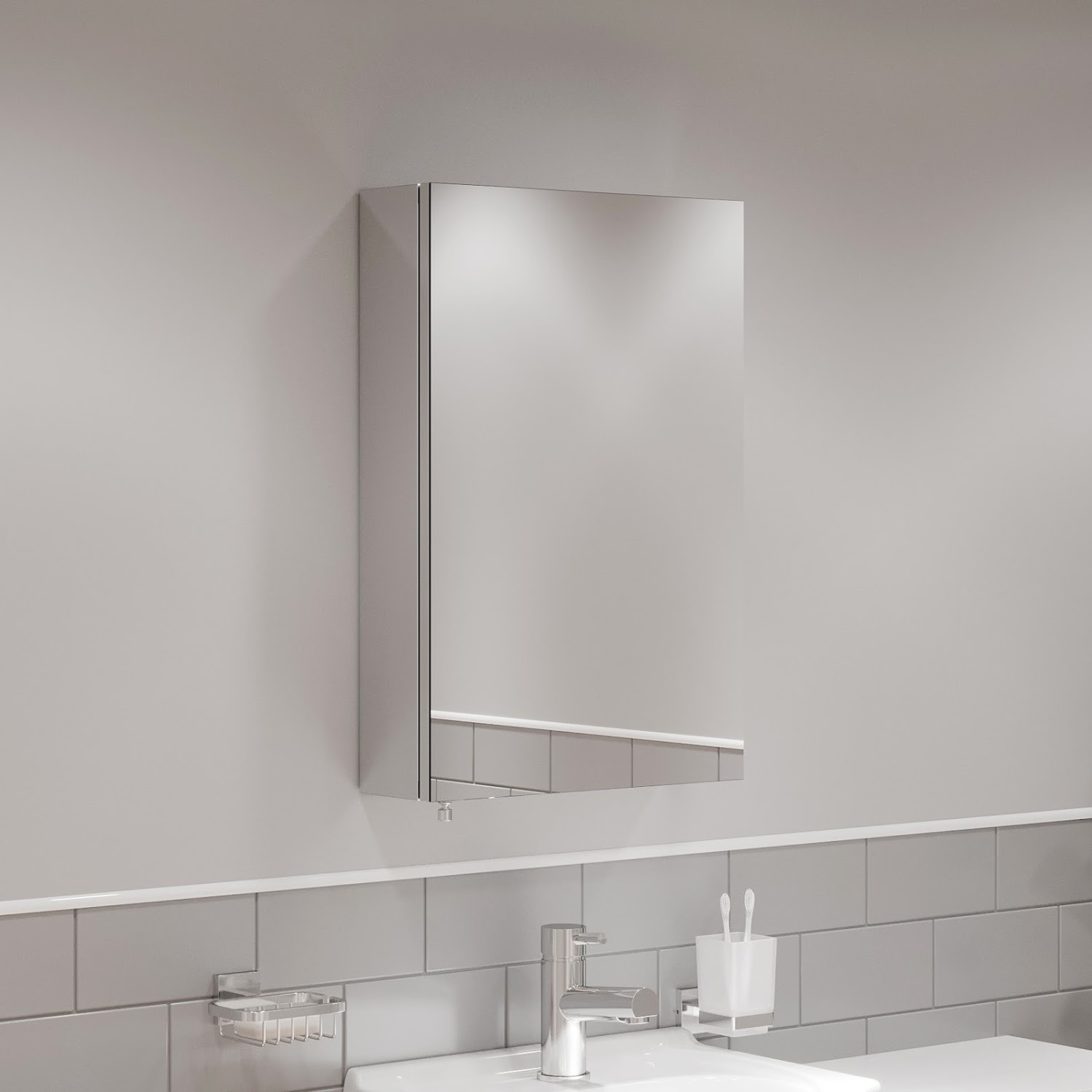Single Door Bathroom Cabinet Types and Styles

Single door bathroom cabinets are a versatile and practical storage solution for any bathroom. They offer a compact design, perfect for smaller spaces, while providing ample storage for toiletries, towels, and other bathroom essentials. These cabinets come in a variety of types and styles to complement any bathroom decor.
Types and Styles of Single Door Bathroom Cabinets
Single door bathroom cabinets are categorized based on their design, functionality, and aesthetic appeal. Understanding the different types and styles can help you choose the perfect cabinet for your bathroom needs.
| Type | Style | Features | Materials |
|---|---|---|---|
| Medicine Cabinet | Modern, Traditional, Farmhouse | Typically mounted above the sink, often with a mirrored door, designed for storing medications and toiletries. | Wood, metal, glass |
| Wall Cabinet | Modern, Contemporary, Traditional | Mounted on the wall, offering versatile storage options, can be used for towels, toiletries, or decorative items. | Wood, MDF, laminate |
| Floor Cabinet | Traditional, Rustic, Industrial | Freestanding cabinet, providing ample storage space, often used for towels, cleaning supplies, or linens. | Wood, metal, reclaimed wood |
| Vanity Cabinet | Modern, Contemporary, Traditional | Typically paired with a bathroom sink, offering storage for toiletries and other essentials, often featuring drawers and shelves. | Wood, MDF, laminate, marble |
Functionality and Features

Single door bathroom cabinets are designed to optimize storage space and enhance functionality in bathrooms. These cabinets offer various storage options, from shelves and drawers to compartments, providing a convenient and organized solution for toiletries, towels, and other bathroom essentials.
Storage Options
Single door bathroom cabinets offer diverse storage options to cater to different needs and preferences.
- Shelves: These are the most common storage option, offering flexible space for organizing items of varying sizes. Shelves can be fixed or adjustable, allowing you to customize the height to accommodate different items.
- Drawers: Drawers provide a concealed and organized storage solution for smaller items like makeup, jewelry, or medication. They are often equipped with dividers or organizers to maximize space and keep items separate.
- Compartments: Some single door bathroom cabinets feature compartments, which are dedicated spaces for specific items. These can be designed to hold items like hairdryers, curling irons, or toiletries, providing easy access and a streamlined appearance.
Essential Features
Single door bathroom cabinets often incorporate features that enhance their functionality and user experience.
- Adjustable Shelves: Adjustable shelves allow you to customize the cabinet’s interior to accommodate items of different heights. This flexibility optimizes storage space and allows for efficient organization.
- Soft-Close Hinges: Soft-close hinges prevent the cabinet door from slamming shut, reducing noise and potential damage. They also add a touch of elegance and sophistication to the bathroom.
- Integrated Mirrors: Some single door bathroom cabinets incorporate mirrors, offering a convenient and space-saving solution for grooming. The mirror can be positioned on the cabinet door or integrated into the cabinet’s design.
Feature Benefits and Drawbacks
| Feature | Benefits | Drawbacks |
|---|---|---|
| Adjustable Shelves | Allows for customization to accommodate items of different heights, maximizing storage space and efficiency. | May require some effort to adjust and may not be suitable for heavy items. |
| Soft-Close Hinges | Reduces noise and prevents damage to the cabinet door, enhancing durability and user experience. | Can be more expensive than traditional hinges and may require specific installation techniques. |
| Integrated Mirrors | Provides a convenient and space-saving solution for grooming, eliminating the need for separate mirrors. | May not be suitable for all bathroom styles and can limit the cabinet’s storage capacity. |
Single Door Bathroom Cabinet Installation and Maintenance

Installing a single door bathroom cabinet can enhance your bathroom’s functionality and aesthetics. However, proper installation and maintenance are crucial for ensuring its longevity and optimal performance. This section will guide you through the installation process, providing essential maintenance tips and addressing potential problems.
Single Door Bathroom Cabinet Installation
Installing a single door bathroom cabinet requires careful planning and execution. It’s essential to have the right tools and follow a systematic approach to ensure a secure and stable installation. Here’s a step-by-step guide for installing a single door bathroom cabinet:
Tools Required
- Stud finder
- Level
- Tape measure
- Pencil
- Drill
- Screwdriver
- Safety glasses
- Hammer
- Screws
- Anchors (if necessary)
Preparation
- Choose the installation location: Select a suitable location for the cabinet, ensuring it’s accessible and provides ample storage space. Consider the proximity to plumbing fixtures and electrical outlets.
- Clear the area: Remove any obstructions or furniture from the installation area to ensure a clear workspace.
- Locate studs: Use a stud finder to locate wall studs for secure mounting. This ensures the cabinet is properly supported and prevents damage to the wall.
- Measure and mark: Measure the cabinet’s dimensions and mark the wall where the cabinet will be installed. Use a level to ensure the markings are straight and level.
- Prepare the cabinet: If necessary, assemble the cabinet according to the manufacturer’s instructions. Ensure all components are securely fastened.
Installation Procedures
- Mount the cabinet: Align the cabinet with the marked area on the wall and secure it to the wall studs using screws. If mounting on drywall, use anchors to ensure a secure hold.
- Install the door: Attach the door to the cabinet using hinges. Ensure the door swings smoothly and aligns properly with the cabinet frame.
- Install the hardware: Install the cabinet’s hardware, such as handles, knobs, and shelves, according to the manufacturer’s instructions.
- Test the installation: Open and close the cabinet door to ensure it functions correctly. Check for any loose screws or parts that need tightening.
Single Door Bathroom Cabinet Maintenance
Maintaining a single door bathroom cabinet is crucial for preserving its appearance and functionality. Regular cleaning and moisture control are essential for preventing damage and ensuring longevity.
Cleaning
- Dust regularly: Dust the cabinet surfaces regularly using a soft cloth or duster. This helps remove accumulated dust and debris that can dull the finish.
- Clean spills immediately: Wipe up spills promptly to prevent staining or damage to the cabinet’s surface. Use a damp cloth and mild soap for cleaning.
- Avoid harsh chemicals: Avoid using harsh chemicals or abrasive cleaners that can damage the cabinet’s finish. Use mild cleaning agents specifically designed for bathroom surfaces.
Moisture Control
- Proper ventilation: Ensure adequate ventilation in the bathroom to prevent moisture buildup. This helps reduce the risk of mold and mildew growth on the cabinet.
- Avoid direct contact with water: Prevent direct contact between the cabinet and water sources, such as sinks or showers. This helps minimize the risk of water damage.
- Regularly check for leaks: Inspect the cabinet for any signs of leaks, such as water dripping or pooling. Address any leaks promptly to prevent further damage.
Single Door Bathroom Cabinet Problems and Solutions
During installation or over time, you may encounter problems with your single door bathroom cabinet. Identifying and addressing these problems promptly can prevent further damage and ensure optimal performance.
Potential Problems and Solutions
| Problem | Solution |
|---|---|
| Loose screws or hinges | Tighten loose screws or hinges using a screwdriver. |
| Door sticking or not closing properly | Adjust the hinges or door latch to ensure proper alignment and smooth operation. |
| Cabinet not level | Adjust the cabinet’s position by loosening the mounting screws and re-leveling it. |
| Water damage | Dry the affected area thoroughly and address the source of the leak. Consider replacing damaged components if necessary. |
| Mold or mildew growth | Clean the affected area with a bleach solution or a commercial mold and mildew remover. Ensure proper ventilation to prevent future growth. |
Single door bathroom cabinet – A single-door bathroom cabinet can be a real game-changer for keeping your toiletries organised, but don’t forget the importance of a good backdrop! If you’re looking for some inspiration for your downstairs bathroom, check out these downstairs bathroom wallpaper ideas – they’ll make your cabinet look even better.
Once you’ve got your wallpaper sorted, you can really get stuck into organising that cabinet – maybe even with some cute storage baskets!
A single-door bathroom cabinet can be a godsend in a small space, especially if you’re lacking a window. For some seriously clever ideas on how to make the most of a windowless bathroom, check out this article on small windowless bathroom ideas , and then get back to me about that single-door cabinet – I reckon it’ll be a right game-changer.